
The opening of the show will unravel an unusual if not surprising collection of works for their incredibly disparate forms and origins. Indeed Fish Island Labs a creative High-Tec experiment based on data research, programming cutting edge apps, digital media and hologram environments, robotics 3d printing and statistics, virtual reality in all its intriguing guises revealing the tastiest cyborg devices emerging in the metropolis, has teamed up with the Magma Collective and Open Visor.
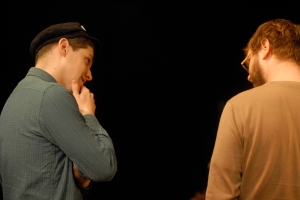
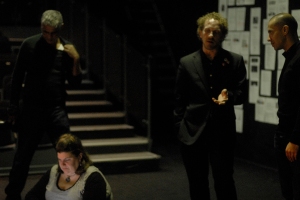
The Barbican is promoting this collaboration, inviting Magma, a group of dedicated mostly multi disciplinary artists, to invoke a new Mnemonic City, now into it’s fifth residency, out of the time machine.
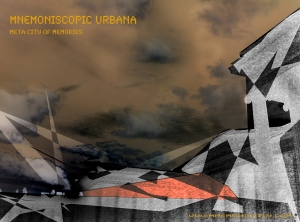
A new Mnemonic event is finally here. It will galvanise the City of London with a march culminating in an exhibition and a series of performances. The artists are inviting everyone to partake in the three consecutive days of creative sensorial and philosophical festivities on the 22d and 23d of August 2015 with the opening night on the Friday 21st. Hackney Wick will be rolling into the square Mile with a cortege leading to the Barbican. But it is not the whole story as a famous writer put it. The opening of the show will unravel an unusual if not surprising collection of works for their incredibly disparate forms and origins. Indeed Fish Island Labs a creative High-Tec experiment based on data research, programming cutting edge apps, digital media and hologram environments, robotics 3d printing and statistics, virtual reality in all its intriguing guises revealing the tastiest cyborg devices emerging in the metropolis, has teamed up with the Magma Collective and Open Visor. The Barbican is promoting this collaboration, inviting Magma, a group of dedicated mostly multi disciplinary artists, to invoke a new Mnemonic City, now into it’s fifth residency, out of the time machine.
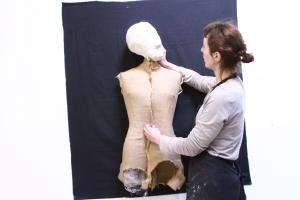
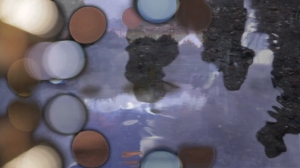
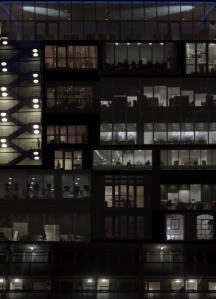
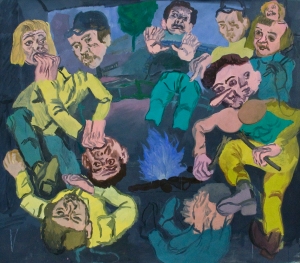
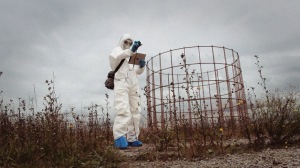
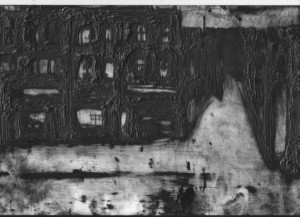
Mnemonic city has travelled from the idea of Plato’s cave, into the street market of Dalston, through Madrid to the outer edge of the city, the abandoned interscape of Edmonton into the cradle of a European symbol of ancient beauty, back to the heart of the global economy in the fortress of cultural entertainment, the Barbican before heading for the Atlantic shores, the magnificent Portuguese capital of Lisbon. After a year of deep core immersion into the layers of our old mega town, the inventions are ready to speak. What we find is a point of connection between ideas of past present and future, in the form of analogue and information technology, both indispensable to the modelling of a modern civilisation where theorists and practitioners alike begin to understand the crucial role of equilibrium between science and art and as importantly the cultivation of openness towards the inclusion of an audience in this process.

The Barbican hosting this meeting of polarities will open its doors to a ‘point of singularity’ that already proves to be an illuminating experience thanks to focus workshops and brain storming sessions. We hope to share this amazing improbability with as many people as this renowned Brutalist venue can contain.
Perhaps we can, through such an amicable meeting of antipodes, redress the balance and suggest there is no real conflict between computer nerds and oil paint geeks. We are bringing to attention the nature of technology and how it can, against all apparent odds, be put at the service of poetry since etymology sheds light on an undeniable affiliation. In short, Technē, the savvy way of doing it like it says on the tin, is a close cousin of Poiesis, the art of making, of transforming a basic form into a refined object. Both lead to the realisation of an idea. Now although the apparatus and the methodology have become an end in themselves, this will not deter the human will from searching for the missing link. On the side of analogue, those we call artists continue to dig content out of matter, and find meaning where others see empty space.
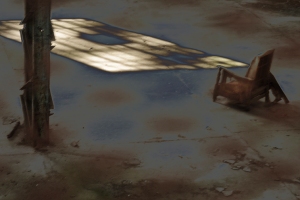
Interfaces, especially from the Mnemonic City perspective, is also demonstrating art has indeed played the part of a bridge moving with the times from civilisation to civilisation, enabling each human being to reconnect with their their deeper nature.
Processing reality through art and technology
21 – 23 August 2015
Foyers
Friday 18:00-21:00
Saturday 12:00-21:00
Sunday 12:00-17:00

Free
From interactive portraits to virtual reality technology, atmospheric realities to enlightening data visualisations – explore the world that emerges when art and technology collide.
Interfaces is the first annual showcase of art from Fish Island Labs, an incubator set up in collaboration with The Trampery to kickstart the careers of a new generation of emerging talent whose work spans technology and the arts.
Over the past 12 months, this community of 20 practitioners have developed cutting-edge new work, covering everything from sculpture, installations and physical performance to coding, film editing and digital art – and now they’re taking over the Barbican Foyers.
Together, these artists take a diverse approach to interrogating how human experience can be transformed by multi-media art practice.
https://www.artrabbit.com/events/interfaces-mnemonic-city-in-collaboration-with-fish-island-labs
August 18, 2015 | Categories: categorithmic | Tags: Analysis, Anna Burel, Antonioni, Arte Povera, Barbican, Baudelaire, Borges, Cyber tec, dada, Dante Alighieri, Digital art, Existentialism, Fish Island Labs, history, Ines Von Bonhorst, Installation, Jaime Valtierra, Magma Collective, Mnemonic City, New wave, Pirandello, psycho analysis, psycho geography, Romanticism, Rupert Jaeger, sculture, Statistic, Surrealism, The city of London, video, Yasmine Dainelli, Yuri Pirondi | Leave a comment
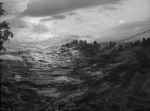
There are many abandoned towns, buildings falling to pieces, empty of life. A few artists were invited to visit such a place and galvanise those derilict sites, empty shells that seemed impossible to revive, through artistic intervention in the village of Argentiera.
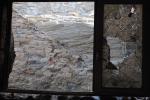
In all, six artists, Marco Zamburru, Ines von Bonhorst, Sebastiano Benegiamo, Yuri Pirondi, Alberto Gori, Yasmin Dainelli and Pascal ancel Bartholdi participated in this explorative excavating mission culminating in several murals, installations, stories, poems, paintings, drawings, videos photographs, and a flash exhibition inside the factory facing the beach at the end of the main street.
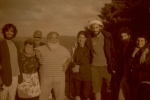
The project began with a research in the history of the village. and the causes of its degeneration. The artists also took the opportunity to listen to the tales from the people they met. They entered the ruins, some of which were even half rebuilt and recorded them. As they did, they sensed the strange lingering atmosphere emanating from objects, paraphernalia, dust, left untouched for many years if not decades. In regards to those items that frankly most people would avoid, a kind of customizing recycling was put in action.
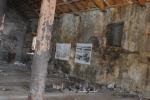
For instance, the hardened circular plaster remains at the bottom of a baket was used as a moon before which someone other than the artists unexpectedly lit a candle, or a bundle of wires into which an old beer bottle was placed with an origami paper boat swayed by the draft sweeping from the barren window of the ruin. Or again, a broken chair propped in front of a mural its shadow painted within, and the charcoal from a fire that ravaged a restaurant and a villa in mysterious circumstances, utilized as a medium to draw the outline of a composition, and so on.
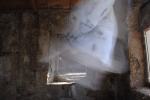
The artists wished to emphasise the remains of the past and generate a new link between the anthropological nature of their discoveries and the emotional connection they formed as they travelled in the area through the architecture and the natural setting in which it lay. But the principal aim was to use the actual walls, the ground, the forms that had lost their meaning to engender a new meaning, in a way, to create a symbiosis between the work and the environment.

This attracted the attention of the dwellers who were curious and welcoming on the whole. A few worded their appreciation. Incidentally, one piece of work painted on an old sheet was taken and later put back in the exhibition space…we can hypothesise about the complexity of their motives. There was an awareness in each artist of the ephemeral quality of some of the works while others would last at least a year or two, perhaps as long as the ruins themselves. In a matter of three weeks, the inhabitants were seeing houses they had known from a very different perspective.
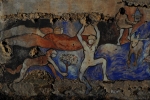
The project coincided with the festival in Sassari comprising mainly debates, readings, and music.This event brought many people to Argentiera, a great number of whom recorded the show of Almanacco Migratorio in a space usually ignored. It is evident that this was an unusual contribution to the cultural life of the area. It would in turn be conducive to the potential regeneration of the village, increasing the possibility of a rebirth and a re-population on a new basis.
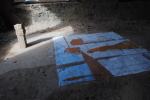
Argentiera, the old mining town abandoned in the 60s would reappear on the map as a site for artistic residency and appeal to a new industry stimulating funding for more festivals.
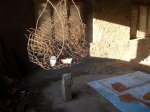
The title of the project is a reference to the soul of a time and place, a journey into the meaning of an ancient memory but migration implies the settling of roots, a need for a more profound experience of a context and a more thorough communication with the spirit hidden within it.
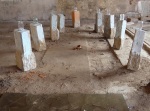
Some of the work was not shown in its entirety and will continue to be developed until and during the next intervention.
August 9, 2014 | Categories: categorithmic | Tags: Alberto Gori, Argentiera, Arte Povera, creative research, Customising, Ines Von Bonhorst, Installation, Interventionism, Marco Zamburru, mining, Reclaiming, Recycling, regeneration, ruins, Sardegna, Sassari, Sebastiano Benegiamo, Situationism, urban, Yasmin Dainelli, Yuri Pirondi | Leave a comment
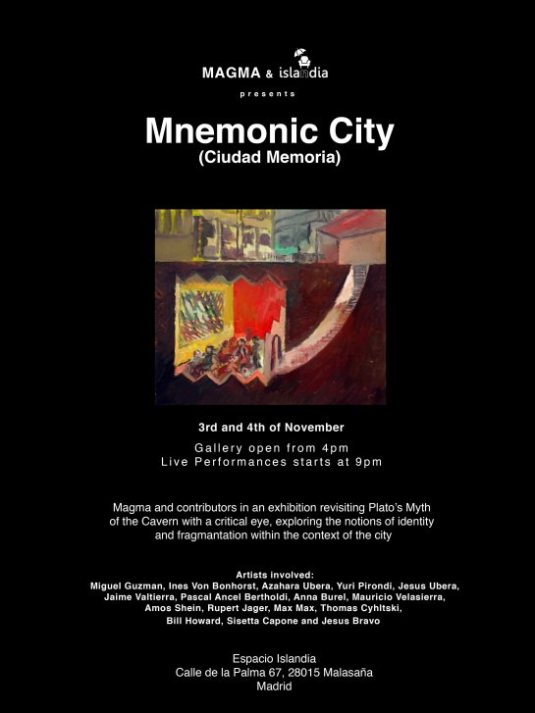
Mnemonic City is exploring the idea of city as a receptacle, taking inspiration from Plato’s Myth of the Cave. The allegory explores the relation of humankind with their environment, questioning what is real and what appearance is. The theme explores notion of identity, fragmentation and the idea of shadow.
The nature of this series of performances is intricately linked to this conjunction of natures by which disparate physical and emotional organized elements construct an image, a common space which becomes an internal metropolis of sensations, a ‘Mnemopolis’, city of remembrance, where ‘anasubstantial’ interconnections take form and language turns back into a primordial sign. This points to the potential/virtual body of what Deleuze and Guattari call “Phase Space”, in this instance, the result of an organic communion of ideas and their ramified manifestations among the performers whose devices interact electrically and electronically during the show. From the concept of the city, Magma moves to the concept of the cave and in doing so triggers a descent into the cave of our latent mind.
The cave Magma explores opens to show the dark motions of the mind traversing territories of ancestral memory having embarked on the ghost ship of mythology. The character of the environment thus reflects the development of the rapport established between the phenomenological process taking place ‘on stage’ and the perceptual response of the members of the public ‘off-stage’ in which these very ‘on/off’ dividing rules become interchangeable and indistinguishable.
Magma’s own artistic evolution defies Plato’s argument, since the work at hand affords the audience a form of knowledge through sensation rather than through the exposition of form as an idea to be unraveled by the intellect. The electrified chamber the performers engineer shows us how the cave can transmute into a lake, the retina of an interior gaze remembering a history in the making.
http://espacioislandia.com/noticias/eventos/ciudad-memoria-mnemonic-city
November 3, 2012 | Categories: categorithmic | Tags: Amos Shein, Anna Burel, Art, Azahara Ubera, Bill Howard, El Espacio, film, Ines Von Bonhorst, Installation, Jaime Valtierra, Jesús Ubera, Madrid, Magma Collective, Mauricio Velasierra, Max Max, Miguel Guzmán, musique, Painting, Pascal Ancel Bartholdi, Performance, Photography, Rupert Jager, show, Sisetta Capone y Jesus Bravo., Thomas Cyhltski, video, Yuri Pirondi | Leave a comment























